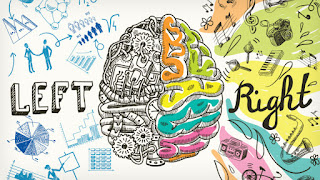Week 7: Neuroscience + Art
The brain has been studied for many years, but neuroscience is a more recent topic, in which was brought to us by Santiago Ramon y Cajal, who is commonly
known as the father of modern neuroscience anatomy. He pioneered a neuron
theory by discovering the remission of neural signals and the degeneration and
regeneration of neurons. Cajal had a passion for drawing and combined this
passion with his later scientific findings to create visual representations of
neural structures he studied. He therefore is a great example of an artist and
scientist coming together.
 |
| Courtesy of: |
 |
| Courtesy of: |
While watching this week’s lectures I learned about the history behind psychedelic drugs. Psychedelic drugs were originally used in the research of the mind and became a phenomenon when they started to be used recreationally. For example, Timothy Leary was a psychology professor at Harvard University who contributed to the counter culture in the 60’S by being one of the biggest LSD researchers and supporters. As a part of his research some of his students participated in using psychedelic drugs. This was a controversial topic that lead to his imprisonment, even though his experiments produced no suicides, murders, psychotic breaks, or bad trips. In fact most of his participants explained their experience as having a positive impact on their lives.
 |
| Courtesy of: |
There is so much depth in the history of neuroscience and
exploring the mind. Because of artist to psychologist, scientist and more we
have been able to dig deeper into the anatomy and neuroscience of our brains. This
week’s lectures have taught me so much about the exploration of brain and the
vast amount of ways we can use and manipulate it.
"Life and Discoveries of Santiago Ramón y
Cajal." Nobelprize.org. N.p., n.d. Web. 20 May 2017.
"Timothy
Leary: The Man Who Turned On America." Top Documentary Films. N.p.,
n.d. Web. 20 May 2017.
Vesna. V. (n.d.). Neuroscience-pt.1. Lecture
Vesna. V. (N.D.). Neuroscience pt3. Lecture
"When
Arts Meet Neuroscience..." PLOS Neuroscience Community. N.p.,
17 Oct. 2016. Web. 20 May 2017.




I agree that neuroscience itself is a form of art. As shown in the work of Butterfly, it is incredible and mesmerizing how advancements of technology have allowed taking images of brain that are artistic. Moreover, the experiment with psychedelic drugs is surprising. Indeed, even if there were no negative consequences, I assume the possibility of leading the participants to addiction as well as other side effects was more concerning at that time.
ReplyDelete